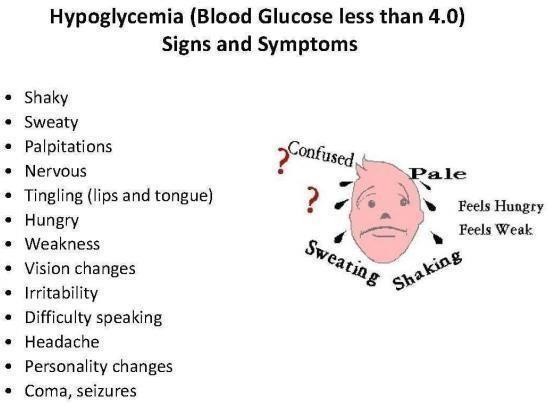A nurse is assessing a client who has type 1 diabetes mellitus and finds the client lying in bed, sweating. and reporting feeling anxious. Which of the following complications should the nurse suspect?
Hyperglycemia
Hypoglycemia
Ketoacidosis
Nephropathy
The Correct Answer is B
Rationale-The symptoms of sweating and feeling anxious in a client with type 1 diabetes mellitus are indicative of hypoglycemia. Hypoglycemia occurs when blood sugar levels fall too low, which can happen with the administration of insulin or other diabetes medications, missed meals, or increased exercise without adequate dietary adjustment. These symptoms are part of the body's natural response to low blood sugar, as it tries to signal the need for a source of energy. It is important for the nurse to recognize these signs promptly and respond with appropriate interventions, such as providing a fastacting carbohydrate, to prevent further complications associated with hypoglycemia.
A, C -Hyperglycemia and ketoacidosis presents with respiratory distress and a fruity odor. They occur due
D-Nephropathy presents with lack or reduced urine output. Injury occurs the renal tubules reduces renal ultrafiltration and reabsorption.

Nursing Test Bank
Naxlex Comprehensive Predictor Exams
Related Questions
Correct Answer is A
Explanation
Morphine sulfate, an opioid analgesic, can cause serious side effects including lifethreatening respiratory depression. A normal respiratory rate for adults is typically between 12 to 16 breaths per minute. A rate of 8 breaths per minute is considered abnormally low and can be indicative of respiratory depression, which is a serious risk associated with opioid medications like morphine sulfate. It's important for healthcare providers to monitor clients closely after administering opioids to manage any potential adverse effects promptly.
B-SaO2 is not a direct indicator of central respiratory depression
C-Pain relief is expected as it is an analgesic
D-Morphine can cause sedation which is okay after respiratory depression has been ruled out
Correct Answer is C
Explanation
Target FBS in Type 1 DM are 80-130 mg/Dl. his statement indicates an understanding of the teaching because maintaining blood glucose levels within the target range is crucial for managing type 1 diabetes mellitus. Regular monitoring and keeping blood glucose levels within the recommended range can help prevent both short-term and long-term complications.
A-A snack is not enough as this depends on the duration of the sport, it should be individualized B- Insulin should be taken even when sick and provider should be contacted to advise on dosage adjustment
D-Storing insulin in the freezer leads to degradation ad loss of efficacy.
Whether you are a student looking to ace your exams or a practicing nurse seeking to enhance your expertise , our nursing education contents will empower you with the confidence and competence to make a difference in the lives of patients and become a respected leader in the healthcare field.
Visit Naxlex, invest in your future and unlock endless possibilities with our unparalleled nursing education contents today
Report Wrong Answer on the Current Question
Do you disagree with the answer? If yes, what is your expected answer? Explain.
Kindly be descriptive with the issue you are facing.
